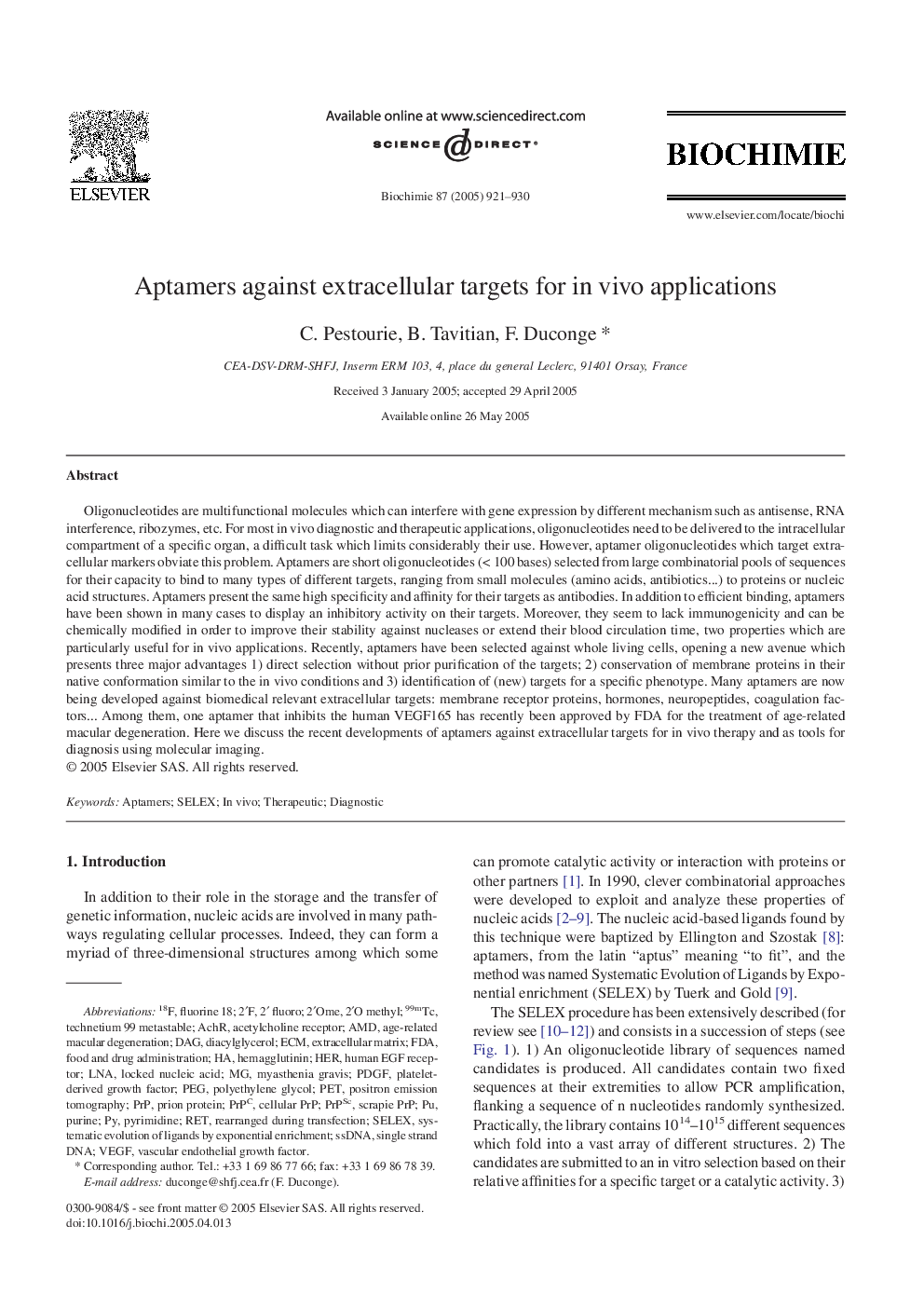| Article ID | Journal | Published Year | Pages | File Type |
|---|---|---|---|---|
| 9887797 | Biochimie | 2005 | 10 Pages |
Abstract
Oligonucleotides are multifunctional molecules which can interfere with gene expression by different mechanism such as antisense, RNA interference, ribozymes, etc. For most in vivo diagnostic and therapeutic applications, oligonucleotides need to be delivered to the intracellular compartment of a specific organ, a difficult task which limits considerably their use. However, aptamer oligonucleotides which target extracellular markers obviate this problem. Aptamers are short oligonucleotides (< 100 bases) selected from large combinatorial pools of sequences for their capacity to bind to many types of different targets, ranging from small molecules (amino acids, antibioticsâ¦) to proteins or nucleic acid structures. Aptamers present the same high specificity and affinity for their targets as antibodies. In addition to efficient binding, aptamers have been shown in many cases to display an inhibitory activity on their targets. Moreover, they seem to lack immunogenicity and can be chemically modified in order to improve their stability against nucleases or extend their blood circulation time, two properties which are particularly useful for in vivo applications. Recently, aptamers have been selected against whole living cells, opening a new avenue which presents three major advantages 1) direct selection without prior purification of the targets; 2) conservation of membrane proteins in their native conformation similar to the in vivo conditions and 3) identification of (new) targets for a specific phenotype. Many aptamers are now being developed against biomedical relevant extracellular targets: membrane receptor proteins, hormones, neuropeptides, coagulation factors⦠Among them, one aptamer that inhibits the human VEGF165 has recently been approved by FDA for the treatment of age-related macular degeneration. Here we discuss the recent developments of aptamers against extracellular targets for in vivo therapy and as tools for diagnosis using molecular imaging.
Keywords
ECM18F99mTcPrPcssDNAPDGFPrPPrPscAChRLNAAMDSELEXFDASingle strand DNAAptamersLocked Nucleic AcidHERDiagnosticPositron emission tomographysystematic evolution of ligands by exponential enrichmentRETRearranged during transfectionTherapeuticIn vivodiacylglycerolDAGFood and Drug Administrationage-related macular degenerationVascular endothelial growth factorVascular Endothelial Growth Factor (VEGF)platelet-derived growth factorFluorine 18Extracellular matrixMyasthenia gravishemagglutininPETPrion proteinpolyethylene glycolPEGPurinePyrimidineacetylcholine receptor
Related Topics
Life Sciences
Biochemistry, Genetics and Molecular Biology
Biochemistry
Authors
C. Pestourie, B. Tavitian, F. Duconge,
